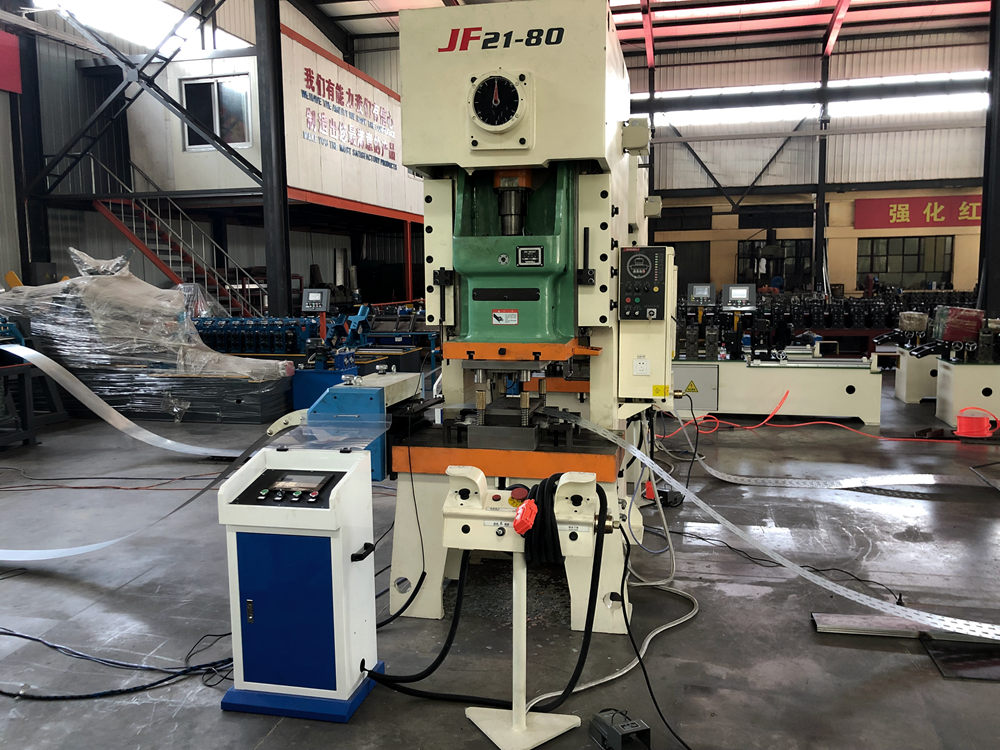
Double Layer Roll Forming Machine Revolutionizing Construction and Manufacturing
In the ever-evolving landscape of construction and manufacturing, efficiency and versatility are paramount. One of the most innovative tools contributing to this evolution is the double layer roll forming machine. This robust piece of machinery is not only designed for exceptional efficiency but also for producing a wide range of profiles, making it a significant asset for manufacturers aiming to optimize their production processes.
What is a Double Layer Roll Forming Machine?
A double layer roll forming machine is an advanced type of roll forming equipment that can produce two different profiles simultaneously. Essentially, it consists of two sets of roll forming dies integrated into a single machine. This allows manufacturers to create two distinct metal sheets or components, such as roofing sheets, wall panels, and other structural components, without needing separate machines. By utilizing a single machine for multiple profiles, businesses can save on both space and capital investment.
Key Features and Benefits
1. Increased Productivity Traditional roll forming machines necessitate the use of different machines for each profile, which can be time-consuming. In contrast, the double layer roll forming machine streamlines the process, allowing rapid switching between different profiles with minimal adjustments. This flexibility leads to increased production rates and reduced downtime.
2. Cost Efficiency Investing in a double layer roll forming machine can significantly reduce operational costs. Manufacturers can minimize their initial investment by purchasing a single machine instead of multiple machines dedicated to specific profiles. Additionally, the reduction in space required for equipment provides extra savings in facility costs.
3. Versatility One of the standout features of the double layer roll forming machine is its versatility. Manufacturers can produce a wide array of products, serving different sectors such as residential, commercial, and industrial construction. This versatility allows businesses to adapt to market demands with ease, making them more competitive.
4. Quality and Consistency The roll forming process is designed to produce high-quality products with excellent dimensional accuracy. The double layer roll forming machine maintains consistency across batches, ensuring that the end products meet stringent quality standards. This reliability is crucial in sectors where material quality is non-negotiable.

5. Automation and Ease of Use Many double layer roll forming machines come equipped with advanced technology such as PLC control systems, which facilitate automated operations. Operators can easily program the machine to produce different profiles, enhancing user-friendliness and minimizing the risk of human error.
Applications in the Industry
The applications of double layer roll forming machines are extensive and varied. They are predominantly used in the production of
- Roofing Sheets The versatility of these machines allows for the creation of various roofing profiles designed to meet diverse aesthetic and functional needs. - Wall Panels They can manufacture insulated wall panels that provide thermal efficiency alongside structural integrity.
- C-Z Purlins Essential for steel construction, these profiles can be produced efficiently, allowing for quicker project completion.
- Gutters and Downspouts They can also create essential components for drainage systems, which are critical for building longevity and functionality.
Conclusion
The double layer roll forming machine stands at the forefront of technological innovation in manufacturing and construction. Its ability to produce multiple profiles efficiently, coupled with benefits such as cost savings, increased productivity, and high-quality output, makes it an invaluable asset for businesses seeking to enhance their operational capabilities. As the demand for versatile and efficient manufacturing solutions continues to rise, the double layer roll forming machine will undoubtedly play a pivotal role in shaping the future of the industry, proving that adaptation and innovation are key drivers of success in today’s competitive marketplace. Manufacturers looking to remain relevant must consider incorporating such advanced machinery into their production lines to meet the evolving needs of their clients and sustain growth in an ever-demanding landscape.